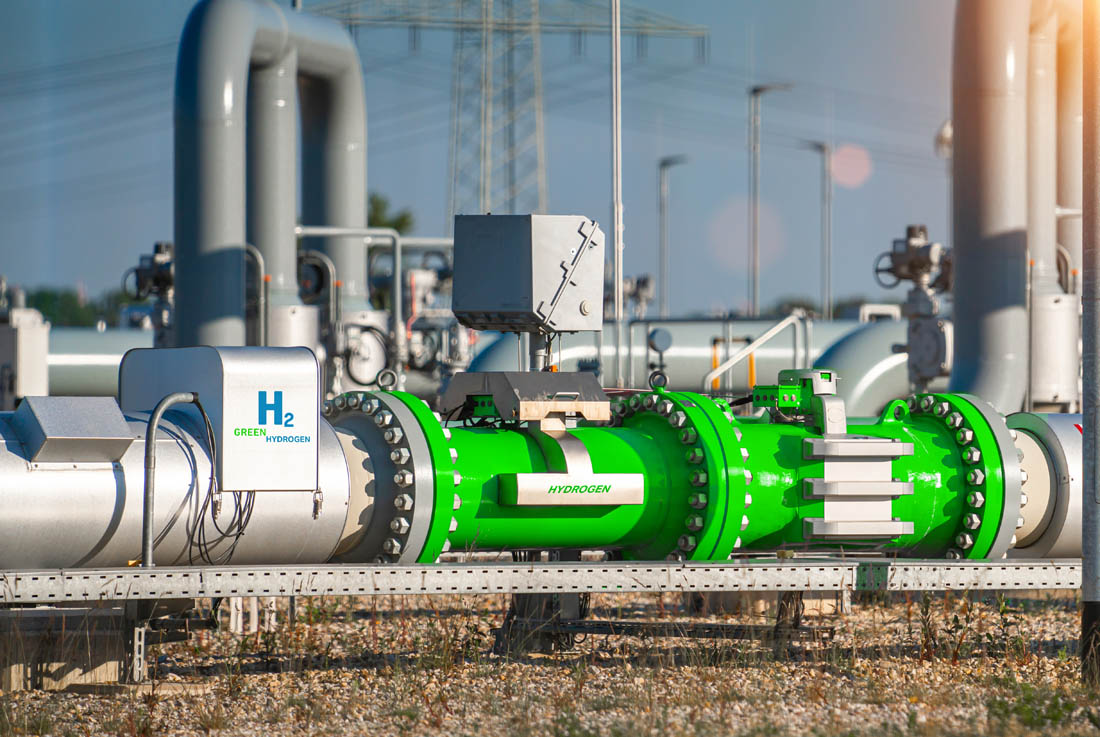The Energy Report: John, In your last interview, you were pretty optimistic about much higher oil prices. What can you attribute the oil market's recent weakness to? Did everyone just get spooked?
John Stephenson: There was a rumor that the U.S. was going to release strategic petroleum reserves, which would lower prices at the pump and also lower prices in the world market. It would be a temporary fix, because the actual total volume of the reserve is only about a month's worth of U.S. consumption. Nonetheless, it would definitely lower prices. There's some waning of geopolitical risk, and some of that risk rhetoric was positive for oil prices.
The European ban on importing Iranian oil has had a pretty dramatic impact on tightening supply. It's roughly equivalent to when Libya was offline because of its revolution. That same level of production, about 1.5 million barrels (MMbbl) is off the global market now, creating a fairly tight supply picture. Then there is the Israel/Iran nuclear confrontation, which has also driven oil prices higher. Realistically, there's very strong support for oil prices in the $90–95 per barrel (bbl) range because one of the big sources of demand for oil has actually turned out to be the Middle East itself, where the producers are becoming their own best customers. They're like drug dealers getting hooked on their own supply, and their consumption growth rates are double those of China.
TER: But, certainly their population isn't anywhere near that of China.
JS: No, it's not. But, the reason why they are this way is because they subsidize fuel. With $0.56 a gallon gasoline in Saudi Arabia, you need $90–95/bbl oil to support the subsidies. In Venezuela and other parts of the world that are key producers, low gas prices are a way to keep their citizens happy, but that impacts their national budgets and necessitates a much higher global price for the commodity to make it all work.
TER: What do you think the possibilities are for oil going back up significantly over $100/bbl? Or is it in sort of a trading range between $90–100/bbl?
JS: I think it's in a trading range from $90–100. It could dip into the high eighties for a while if some of that geopolitical concern is resolved. From where I sit right now, I think it will probably weaken a dollar or two over the next few months. Through 2013, you're probably looking at the $95–105/bbl range. But it's going to be difficult to see it punch much above that. I may have suggested it would go to $125/bbl at one point, but, that's really dependent on global growth returning. Right now, industrial production numbers are very weak around the globe and demand is not that strong. The supply/demand balances have kept prices where they are, with a floor at around $90/bbl. The equities have responded a little bit, but generally, they've really lagged. So it's a good time to start thinking about some trades in the energy space.
TER: The other side of the coin is the North American gas market, which has been pretty sick for the producers but certainly nice for the consumer. Do you see any hope there for higher prices?
JS: Natural gas producers certainly have some things to worry about now, but ultimately, prices have to move higher. The solution is to export the product to other parts of the world. Right now, natural gas is trading at almost $2.90/Mcf. Considering that natural gas was $13–14/Mcf six or seven years ago, today's natural gas market doesn't look so good. Where the market is attractive is in Europe and Japan, where natural gas can often be $18/Mcf. I think the solution is to liquefy it and send it offshore.
Clearly the Gulf of Mexico states have lots of oil and gas assets. I think it's a pretty logical place for investors to look for projects to be sited and developed. The question is, will they get it done? There's been a lot of "not in my backyard" resistance to these projects. That's true throughout the world, but more so in North America. I think that's a long-dated solution. We're looking at a couple of years from now before gas prices lift meaningfully above $3/Mcf, and they could very easily remain in the $2.50–3.50/Mcf range for the foreseeable future.
TER: Getting back to the market, a year ago, your portfolio was sitting with about 78% cash. Did you get more of that cash deployed since then?
JS: Yes. I've got most of it deployed. Our cash is more on the order of 18% now. So, why were we so high then and why are we so low now? It's really because of some moves that have come to fruition in the last two to three weeks. The European Central Bank (ECB) has shown a willingness to defend the currency and not have a disorderly exit. It's become clear that Angela Merkel, for example, has decided that she won't let Greece derail her re-election plans for early next year. So, while it may not be a perfect solution, what the Europeans are implementing has removed the disaster scenario. Have they got a perfection solution? No. But, it's a better solution than they used to have and things have improved considerably. Given that, I think it's still a reasonable environment to start redeploying cash and investing because I don't believe we're going to have a major pullback and experience a 30–40% decline in equities, as we saw in 2008.
You always hear, "don't fight the Fed." Well, you could say, don't fight the ECB. I think the reality is that if it was really willing to do anything and be unconventional in its approach, it would be a losing battle to fight them. It's a good idea to go with the flow. And where the flow seems to be going is not a great market, but it's not all that bad either. That's a very bullish backdrop for many of these commodities or risk-on type investments.
TER: How has your energy portfolio performed since January?
JS: It's been doing bang up, up 30% year-to-date. The reason for that is that we've been fairly nimble. As you pointed out, we've been in cash at various points in the cycle. But, when we thought things were firming, up we've been able to quickly deploy and reinvest. I think we've done things smartly. The era, for many investors, of buy and hold is over because these are different times where the big macro story is driving so much of these returns.
TER: Quite bit of exploration and development activity is taking place in global locations which may not be that stable. Is this the trend for the future?
JS: I think you have to divide the world into two categories. One includes the smaller domestic producers and service companies. Those that are particularly involved in shale oil or shale gas have a pretty bright future, assuming they have good lands, because the demand for oil in North America is pretty strong. I think that's a good thing.
The other category includes the big caps, and they're going to have a little more difficulty. Look at what's happening with BP Plc. (BP:NYSE; BP:LSE), for example, in Russia. Their partnership with TNK is really fractious. I think it's very hard for them to figure out a path forward. The basins around the world are getting smaller, harder to find and more expensive. Most of this is going offshore to places like Nigeria and Greenland. These are new frontiers that people haven't looked at before, but they're starting to. I think the bigger cap names like Royal Dutch Shell Plc (RDS.A:NYSE; RDS.B:NYSE), Exxon Mobil Corp. (XOM:NYSE), even Chevron Corp. (CVX: NYSE) and ConocoPhillips Company (COP:NYSE) will struggle more because, in order to keep production flat or grow it slightly, they will be forced to go to the far edges of the world.
TER: Which production and development companies look good to you right now?
JS: Let's start out by talking about the refining space. The really interesting thing is that the refining margin or "crack spread," as it's known, has really blown out. Right now it is just under $29/bbl. Historically, it has been around $10/bbl. As recently as two weeks ago, it got up to $34/bbl. This was a match made in heaven, particularly for refiners that were buying WTI, because it trades at a discount to Brent. The product market for diesel and gasoline has been very tight.
By way of example, here is a tale of two companies—two independent refiners in the U.S. are Tesoro Corp. (TSO:NYSE), which we like, and Valero Energy Corp. (VLO:NYSE), which we don't so much. Why do we like Tesoro? It's in the mid-continent, which is where a lot of the crudes get trapped and trade at a discount to the world price, which is now becoming Brent. Brent itself is trading at $18/bbl more than WTI. So, the oil price number we see on our screen—just inflate that by roughly 20%. That's what most of the world is paying for the raw material. Tesoro has a better focus in the key regions where the crude is cheap. So we like that name a lot. Valero—not so much—because it's exposed more to the Gulf Coast, where prices seem to be trading in line with the Brent prices. So we see its situation as more challenging.
Another name that we like, because of the lack of political risk, is Suncor Energy Inc. (SU:TSX; SU:NYSE). It's been a bit weak of late, which has a lot to do with the fact that the focus hasn't been on oil until the last three weeks or so. Suncor is a cash-flow machine that's going to $2 billion dollars a year, with visible production growth. They've had some problems with fires and other issues related to its upgraders, where it upgrades the bitumen into value-added products, like synthetic crude. We see a very strong growth profile ahead of the company and view it as dirt cheap at this level. We think this is something that people should consider getting into.
A more topical story related to the oil patch is a company called Nexen Inc. (NXY:TSX; NXY:NYSE). This is an oil sands company, but it also has assets in the Gulf of Mexico and the North Sea. It looks, at this point in time, that it will be acquired by China National Offshore Oil Corporation, or CNOOC. It's waiting for the Canadian federal government to pass judgment on whether or not to permit this takeover. I think it's highly likely that it will be granted. Nexen shareholders just voted 90% in support of the transaction. It comes at a huge 60% premium to the share price. We're recommending that investors tender to this offer.
We think it'll get approved because CNOOC will keep all of the staff and make Calgary the headquarters for North American operations, with the stock listed on the TSX. Nexen's asset base is pretty small in Canada, accounting for just about 1% of Canadian oil production. So it shouldn't be opposed by the government. This does show how the industry, overall, is really looking at non-traditional sources of capital in order to build up many of its assets.
The last group of names falls into the services camp. I mentioned earlier that the services industry is going progressively offshore as producers flock to new frontiers. A couple of names to highlight are Halliburton Co. (HAL:NYSE) and Schlumberger Ltd. (SLB:NYSE). They're both big-cap names that have been a bit weak through most of the year, but they are starting to show a little bit of life again. Both are underpinned by very strong North American operations with strong growth in the global or offshore portions of their businesses.
Lastly a small-cap name in that space, Canyon Services Group Inc. (FRC:TSX), has been one of my best performers in the last year. It's a bit quirky—it will go up and down. I would probably wait until it gets below $10 per share to buy again. It's certainly run from $9–14 per share a couple of times over the course of the last year and a half. But it has an excellent valuation, and it's one of the best small oil field services companies out there. This is another name I would recommend.
It's a pressure pumper, which is what is used in the fracking process to unleash natural gas. It's acquired a brand new fleet of trucks. The management is well liked and it's paying a dividend as well. If you're worried about the downside, you're getting a current 6% dividend, which is one heck of a good yield for any company. You've got the best of both worlds—growth plus dividend support. As the seasonal pattern for energy evolves, you'll see a nice rally. It'll fade in the summer months and then start rallying again in the fall. I think this is a name that many investors could wade into, possibly at a few dollars cheaper than it is today. They should be well rewarded if they're willing to wait a few months.
TER: That's a good one to keep an eye on. So, maybe you can summarize your current outlook for the energy markets and tell us what you think investors ought to be doing here as we move into next year.
JS: I expect natural gas prices to remain weak, but look for the turn and for the approval of LNG facilities as your signal to start buying in the space. Gas will have an amazing run once we get some export capability out of North America. Companies like Apache Corp. (APA:NYSE) are very involved in projects right now, which will be the ultimate future for the gas industry. The oil industry has a floor under the global price of $90/bbl. The key things to keep in mind will be looking for producers who are good at managing the cost side of the business, and are in areas of relatively low geopolitical risk.
Many oil companies, and the industry as a whole, is going towards offshore drilling. That benefits, in the longer-term, when global growth resumes. Halliburton, Schlumberger, Transocean Ltd. (RIG:NYSE; RIGN:SIX) and even Baker Hughes Inc. (BHI:NYSE) are the companies that supply the global behemoths with critical services, and will all benefit. These service companies are in demand by the national oil companies, whether they be Saudi Aramco or others, to help them develop. Lastly, North America is increasingly moving towards energy independence. Although we're energy independent on natural gas, we are a long way from being energy independent on oil, but we are moving in that direction. It's years away, but it's a visible trend now.
TER: We'll leave it on that optimistic note, John. Until next time.
JS: I look forward to that.
Read Stephenson's tips for profiting from gold's climb in his Gold Report interview, John Stephenson's Predictions for Avoiding an Economic Crash.
John Stephenson is a senior vice president and portfolio manager with First Asset Investment Management Inc., where he is responsible for a wide range of equity mandates with a particular focus on energy and resource investing. He has been recognized by Brendan Wood International (BWI) as one of Canada's 50 best portfolio managers for the past three years. He is the author of The Little Book of Commodity Investing (John Wiley & Sons, 2010), which has been translated into five languages and Shell Shocked: How Canadians Can Invest After the Collapse (John Wiley & Sons, 2009), and writes a free bi-weekly investment newsletter, Money Focus, which reaches a global audience of more than 125,000. Stephenson holds a degree in Mechanical Engineering from the University of Waterloo, a Master's in Business Administration from INSEAD, as well as the Chartered Financial Analyst (CFA) and Financial Risk Manager (FRM) designations. He lives in Toronto.
Want to read more exclusive Energy Report interviews like this? Sign up for our free e-newsletter, and you'll learn when new articles have been published. To see a list of recent interviews with industry analysts and commentators, visit our Exclusive Interviews page.
DISCLOSURE:
1) Zig Lambo of The Energy Report conducted this interview. He personally and/or his family own shares of the following companies mentioned in this interview: None.
2) The following companies mentioned in the interview are sponsors of The Energy Report: Royal Dutch Shell Plc. Interviews are edited for clarity.
3) John Stephenson: I personally and/or my family own shares of the following companies mentioned in this interview: Suncor Energy Inc., Nexen Inc., Halliburton Co., Schlumberger Ltd. and Tesoro Corp. First Asset Management Inc. owns Suncor Energy Inc., Nexen Inc., Halliburton Co., Schlumberger Ltd., Tesoro Corp., Canyon Energy Services, Royal Dutch Shell Plc, Transocian Ltd. and Baker Hughes Inc. I personally and/or my family am paid by the following companies mentioned in this interview: None. I was not paid by Streetwise Reports for participating in this interview.




































